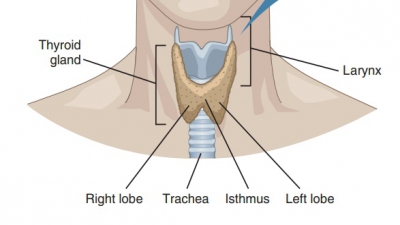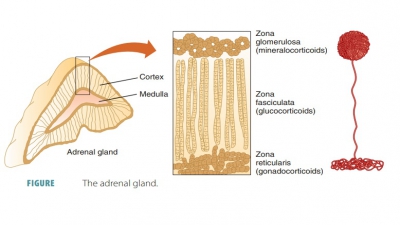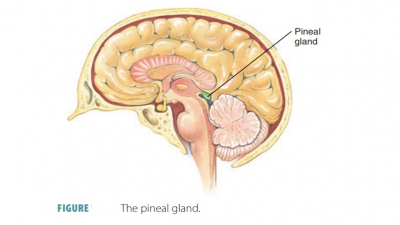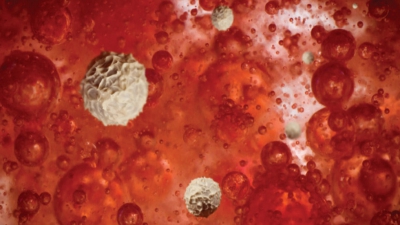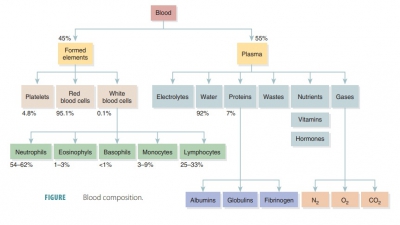Stress
| Home | | Anatomy and Physiology | | Anatomy and Physiology Health Education (APHE) |Chapter: Anatomy and Physiology for Health Professionals: Endocrine System
Homeostasis ensures survival. When danger is sensed, the hypothalamus triggers physiologic responses, which include increased sympathetic activity and increased secretion of adrenal and other hormones.
Stress
Homeostasis ensures survival. When danger is sensed, the
hypothalamus triggers physiologic responses, which include increased
sympathetic activity and increased secretion of adrenal and other hormones. A
factor stim-ulating this type of response is a stressor and the condi-tion it
produces is stress. Many stresses are
opposed by specific homeostatic changes. For example, when body temperature
declines, it leads to shivering and changes in the pattern of blood flow. This
can restore normal body temperature.
The body also has a general response to stress that occurs
while other, more specific responses are under way. When exposure to a wide
variety of stress-causing factors occurs, it produces the same general pattern
of hormonal and physiologic changes. These responses are part of the general
adaptation syndrome that is also known as the stress response.
Physical factors and psychological factors both can produce
stress. Physical factors include tempera-ture changes, decreased oxygen
concentration, infec-tions, injuries, prolonged exercises, and loud sounds.
Physiological factors include real or imagined dangers, personal loss, and
unpleasant social situations. Psy-chological stressors also include anger,
fear, anxiety, depression, grief, and guilt. Positive stimuli can also be
stressful in certain situations.
The hypothalamus controls the stress response as part of the
general adaptation syndrome.
Reac-tions occur in either the immediate “alarm” stage or the longer term
“resistance” stage. The hypothalamus first prepares the body for the fight-
or-flight syndrome by raising blood glucose, glyc-erol, and fatty acids and by
increasing heart rate, blood pressure, and breathing rate. It dilates the air
passages, moves blood from the skin and diges-tive organs to the skeletal
muscles, and increases epinephrine secretion from the adrenal medulla (FIGURE 16-19).
The resistance response involves the release of CRH to
stimulate the secretion of ACTH, which stim-ulates cortisol secretion. This
increases blood amino acids, release of fatty acids, and glucose formation. The
body is being prepared for physical action to alleviate the stress. Energy
sources are mobilized and blood volume is increased, which is important during
bleeding or heavy sweating.
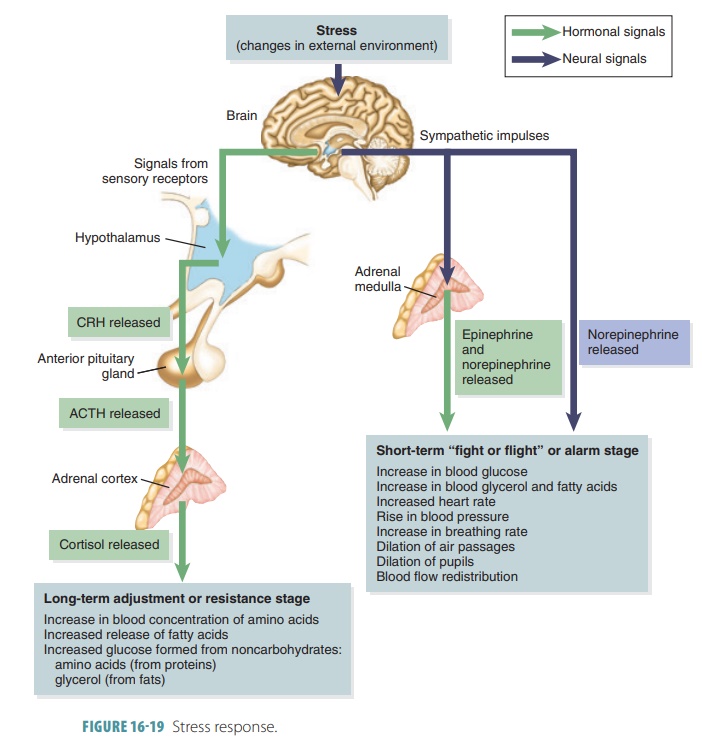
The hypothalamus controls the stress response as part of the
general adaptation syndrome.
Reac-tions occur in either the immediate “alarm” stage or the longer term
“resistance” stage. The hypothalamus first prepares the body for the fight-
or-flight syndrome by raising blood glucose, glyc-erol, and fatty acids and by
increasing heart rate, blood pressure, and breathing rate. It dilates the air
passages, moves blood from the skin and diges-tive organs to the skeletal
muscles, and increases epinephrine secretion from the adrenal medulla (FIGURE 16-19).
The resistance response involves the release of CRH to
stimulate the secretion of ACTH, which stim-ulates cortisol secretion. This
increases blood amino acids, release of fatty acids, and glucose formation. The
body is being prepared for physical action to alleviate the stress. Energy
sources are mobilized and blood volume is increased, which is important during
bleeding or heavy sweating.
1. What
hormones are secreted by the placenta, thymus gland, and stomach?
2. List
the hormones produced from the adipose tissue, skin, heart, and skeleton.
3. What
are the functions of glucagon?
4. What
hormones are released by the digestive glands (stomach and small intestine)?
